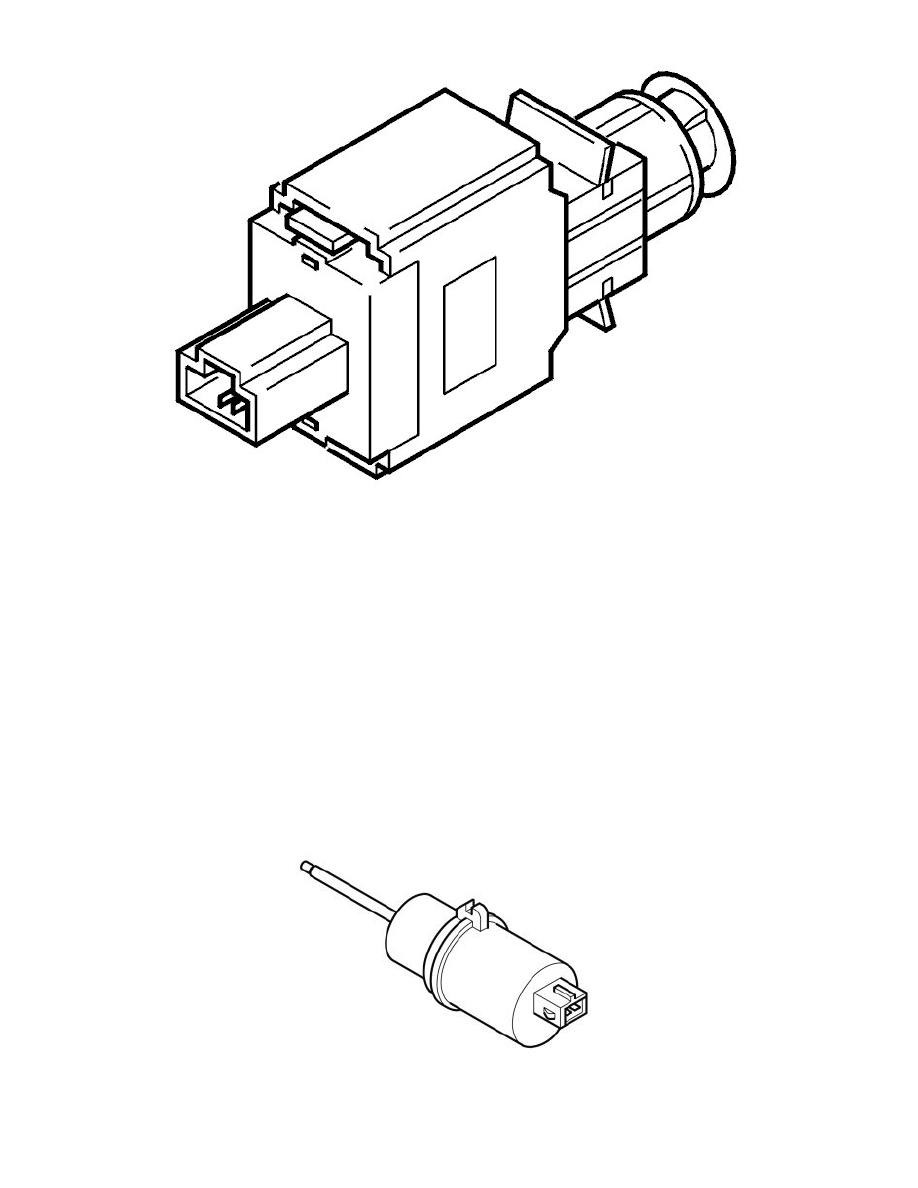S80 L6-2.9L VIN 92 B6294S2 (2004)

The stop lamp switch is on the pedal box by the brake pedal. Its task is to supply the Engine control module (ECM) and Electronic throttle module
(ETM) with information about the position of the brake pedal, if it is released or depressed.
One pin for the stop lamp switch is connected to battery voltage (terminal 30), the other pin is connected to the Engine control module (ECM) and the
Electronic throttle module (ETM). When the brake pedal is in the released position, the stop lamp switch circuit is open, which means that 0 V is sent to
the Engine control module (ECM) and the Electronic throttle module (ETM). If the brake pedal is depressed, the stop lamp switch circuit closes and
battery voltage is sent instead.
The information from the stop lamp switch is used:
-
together with information from the brake pedal position sensor to determine when it is permitted to use cruise control or not
-
to determine whether the information from the brake pedal position sensor is valid or not.
-
when the CAN does not work, to be the only information to the Electronic throttle module (ETM) about the position of the brake pedal.
To determine whether the information from the stop lamp switch can be used or not, the Engine control module (ECM) and the Electronic throttle
module (ETM) carry out plausibility checks.
For further information about which tests are carried out, see diagnostic trouble code (DTC) information for the relevant diagnostic trouble code (DTC).
brake pedal position switch
The brake pedal position sensor is mounted on the power brake booster in the engine compartment. Its task is to supply the Engine control module
(ECM) with information about the position of the brake pedal.
The brake pedal position sensor is affected by the brake pedal push rod and is a sliding potentiometer. The sensor is supplied with 5 V from the engine
